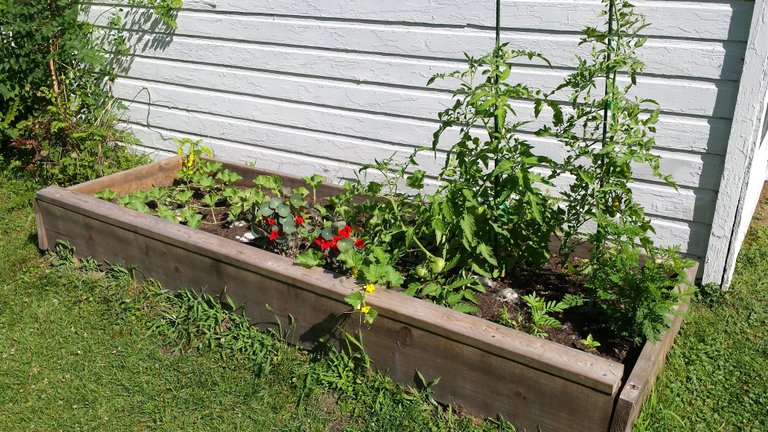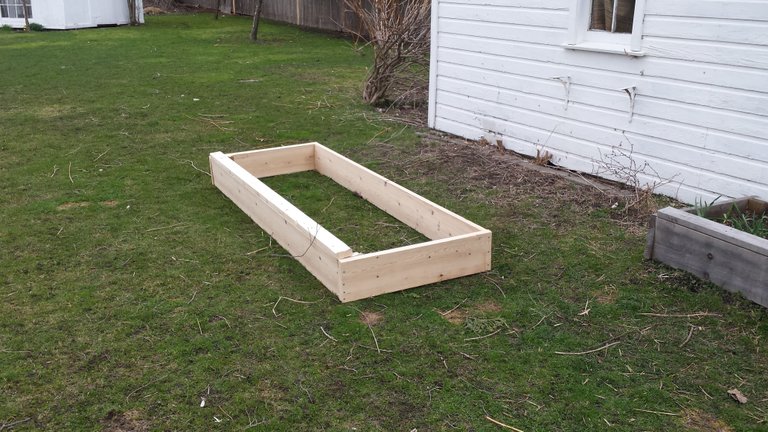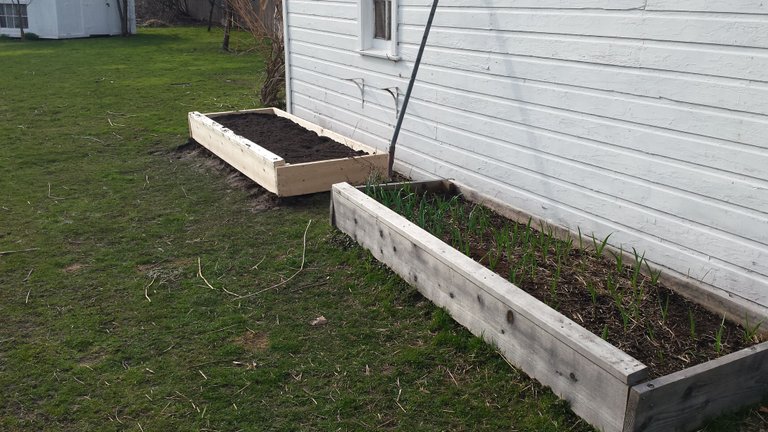
I think it would be great if more people grew some of their own food. It's so easy and rewarding that once you've tried it you'll probably want to become self sufficient or start an urban farm. My goal with these particular pieces is to introduce my fellow steemians to raised bed gardening, beginning with how to get started, what to plant , when to harvest, good rotation practices, companion planting to discourage pests and most importantly making your garden a welcome place for earthworms.
So first of all, why raised beds? Well there are many ways to organize a garden but I used raised beds for the following reasons:
- I never have to use a rotary tiller. This is significant because tilling hurts the worms, destroys soil structure and promotes the growth of weeds.
- I'm not as young as I used to be and with raised beds I don't have to bend over as much.
- I hate weeding. With raised beds the weeding is minimal because I never till. The reason this is important is because there are estimated to be 1 million weeds seeds in 1 square in of soil and when you repeatedly use a rotary tiller you are constantly bringing fresh weed seeds to the surface.
- My raised beds never get stepped on, so the soil never gets compacted. This allows plant roots to spread into a much bigger area yielding healthier plants that are more reistant to disease, pests and drought.
- In my opinion raised beds make the best environment for worms. i use my worm population as an indicator of soil health, so I don't have to spend money on soil testing kits.
I like to use wooden boxes, such as the ones below, for my beds because they prevent soil erosion.

This is the raised bed I put in last year. It's an 8ft long 3ft wide 1 ft high pine box. Notice that it doesn't have a bottom, that would prevent the earthworms from moving in. Feel free to experiment with any size and shape you like, but my experience is anything wider than 3ft can become a chore. I filled it with a mixture of 2 parts top soil to 1 part compost. The 1st bed has my garlic that I harvested last fall.

The main negative to the system I use is the initial startup cost. It cost me around $75 to $100 to buy the materials, soil and compost. However, if you're more resourceful than me you could scavenge the materials. Just make sure any wood you use is untreated so you don't have chemicals leaching into the soil. If you can't scavenge the wood and buying it is not in your budget you can simply pile up soil into a mound. It's more important to get started than to plan the perfect structure. You'll be healthier and happier.
In my next post I'll talk about soil health and how to improve it.
Please don't hesitate to ask me questions in the comments area.
Upvoted by @gardening-trail
Thank you for following and upvoting @gardening-trail
Read our guidelines here. Join us In the Gardening-Trail and let's discuss Gardening Related Topics
Your use of the raised beds next to a building foundation is, in my view, one of their most appropriate applications. Next to a building foundation, folks may be concerned about lead from old paint, long-lasting pesticides from spraying the building perimeter for termites, the really alkaline conditions next to concrete foundations, or poor subsoil used to backfill against foundations during building construction. Raised beds with soil brought in, like you are doing, can be the way to go. I'm lucky to have Class I soil in a wide open area, so there's nothing better that I can do than use my native soil -- as long as I don't walk all over it. So I create loosely formed beds every year. Looking forward to seeing what you do with your raised beds this season! Happy gardening!
Those are excellent points. They don't all apply to my property but they are definitely important things to consider. The structure my beds are next to is basically a simple wooden shed it has a dirt floor, so no foundation. I didn't realize this could be an issue, so I just got lucky on that count. I should probably have the paint tested to make sure their is no lead content. I appreciate your feedback.
I completely agree! People need to garden more! Your little gardens are looking really nice so far!! Those raised beds seem much better!
Nice beds. Great idea with the board on the outer edge giving somewhere to knee for an easy reach to the back. Good job. Eagerly awaiting your next post on soil health and how to improve it.
Greetings, @gladbhoy! The content is useful, thanks!
This looks great! I've use raised beds in the past and they worked well! Unfortunately now at my little apartment there is not enough direct sunlight. One alternative I found to raised beds are Smartpots. They work well and "connect" to the soil. The only problem, is the earthworms can't get in.
If I lived in an an apartment I would use an option like that. You should try it. To bad your not in Michigan I could rent you a little plot.
Yup that would be great! Its definitely a bummer because I am in sunny southern California in a region that is identified as zone 10b. Just the landlord plated a big tree which shades out most of the yard. So the last couple years I have only been successful with herbs like rosemary, mint, and cilantro. And some larger plants like basil and chard. Everything else just doesn't get enough sunlight.
Shepherd hooks can be put almost anywhere, and tomato plants make excellent hanging plants. If you have steps, a porch, or walkway or any other creative place to put a pot, almost all things can be grown in pots. I have great results by using pots.
Excellent post. When I had a house, I always used raised beds. I can not use them in the RV Parks, so I am using pots. Thanks for sharing.